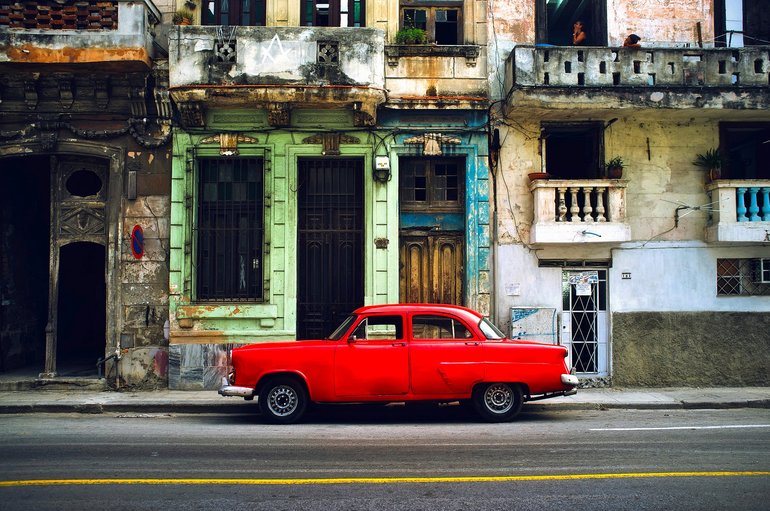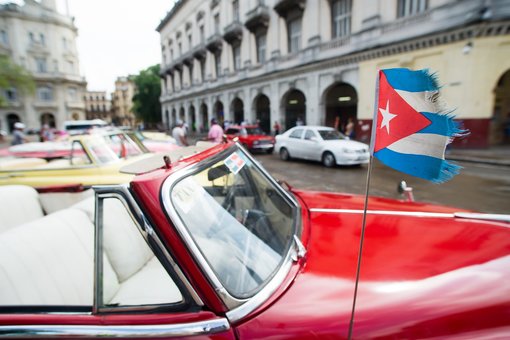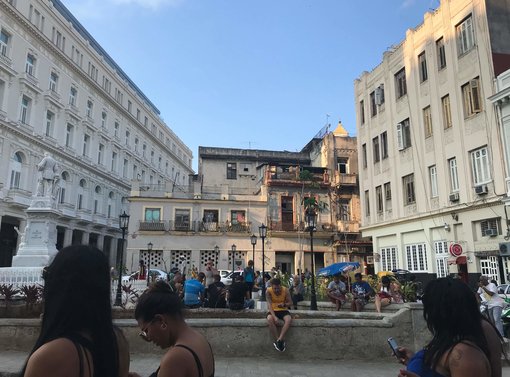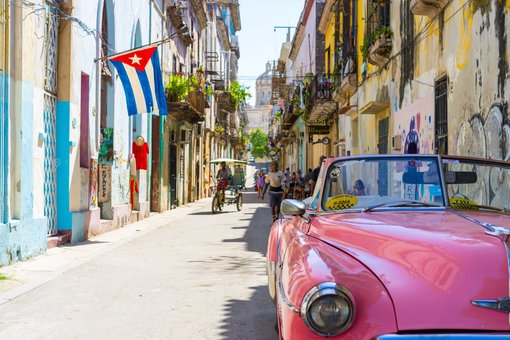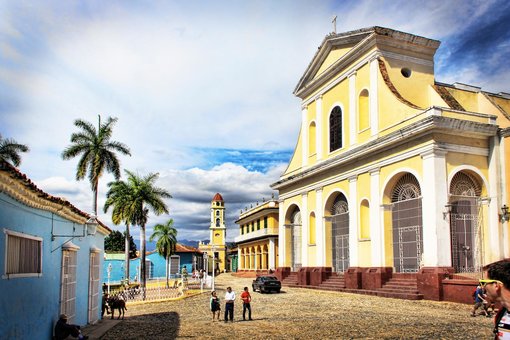There aren’t many humans I encounter that aren’t spilling over with questions after finding out that I have traveled to Cuba. I get it. I was the same way when I first began researching the island as a travel destination. For most of the world, Cuba seems this otherworldly place that exists, but on a different plain.
Admittedly, I shared the sentiment and did plenty of due diligence before I even considered buying a plane ticket, leaning heavily on my travel blogging community for insider tips and tricks, referrals, and links to various published pieces and Youtube videos. Much to the chagrin of the backpacking community where travel is mostly spontaneous. Aware that visiting Cuba would be like experiencing a time warp in addition to being financially cut off (read on for details), personally, I wasn’t going to take any chances. Each hour of research enlightened me with different informational nuggets.
I say that to say that all of them were necessary. If you feel like pulling up Youtube in your browser then typing in “t*ravel to Cuba*” in the search engine is too cliche, know that it really isn’t.
Regardless of all of that, here is a summation of tips. Some I knew before I arrived, some I did not. Those I thought I “knew” about before I arrived, I discovered that I had no real idea the impact they would have on my travel experience until I lived it. Ergo, this blog piece with six (that’s not too many, right?) noteworthy travel tips for any type of traveler: solo, female, backpacker, family, couples or friends.
1. Wi-Fi
It BLOWS! Anyone who’s traveled there knows it, the Cubans know it and now, so do you. Oh, and for the record, any listed accommodation advertising or that is being advertised as offering Wi-Fi should be taken with a grain of salt. Wi-Fi is not typical in establishments and is primarily accessed only in public Wi-Fi parks around the country.
I know what you’re thinking: Why wouldn’t you just get a local SIM card upon arrival, Meredith? Great question reader!
I travel with an unlocked phone allowing me to swap SIM cards when necessary. That also means that I do not have regular data access if not connected to a Wi-Fi signal. The Havana airport does not offer free Wi-Fi, thus my pickle. Globetrotter problems, I know, but you asked.
SIM cards are available, but for pre-existing numbers only AND you’ve got to download an app, register (which takes 48 hours to activate), then get assigned a phone number. Wi-Fi and SIM cards can be acquired at ETECSA, which is the only wireless company in the country. There is a store located at the Havana airport, outside of the exit doors, across the street and down the walkway of shops and cafeterias.
Wi-Fi cards come in one or five-hour increments; one CUC per hour. I recommend 5-hour cards as network connections are often disrupted and/or slow so it may take you an hour just to send a handful of emails, check your messages and upload a few instastories. A digital nomadic paradise it is not!
An important note, keep these cards in a safe and dry place. When two of my cards were dampened by rainfall seeping through the edges of my wallet, the numbers were disintegrated rendering them useless. I was forced to find an ETECSA, explain in terribly broken Spanglish, and then wait for close to an hour for the paperwork to replace them to be filled out and filed before the cards were replaced.
Travel tip: come prepared to be more disconnected than you’re used to when visiting Cuba. Otherwise, ETECSA Wi-Fi cards can be purchased to use throughout the duration of your stay.
Additional travel tip: have CUC and your passport ready when purchasing either the Wi-Fi or SIM cards or none of the tellers will be inclined (or legally able) to assist you.
If you have a contact with a Cuban phone line than this option could work for you. For those that travel without an existing data plan for international Wi-Fi access, it seemed mute.
2. Currency
Cambio, or change in gringo, is an issue islandwide, especially so when outside of Havana. I’m not talking about exchanging money, I’m referencing paying for things with large bills. Most vendors will not be able to give you change for anything higher than 5 or 10 CUC. When exchanging your foreign currency for Cuban currency be sure to request as many small bills as possible (3s and 5s). And hang onto any pesos (coins) you get back from restaurants/vendors/guesthouses because they truly come in handy.
Speaking of exchanging money, USD is now accepted at exchange places BUT has an extremely high tax attached to it because the currency is not utilized on the island in any capacity. My workaround was to exchange my USD ahead of time into Euros. Canadian dollars can also work.
Don’t be tempted to exchange all of your money at once. Outside of Havana prices for food, souvenirs and entrances drop significantly. For example, I budgeted $100/day (as recommended by my travel community) and spent nothing close to that. That being said, ATMs are available but do not communicate with American banks in any way so bringing more cash than you might need is smart travel planning. Money exchanges (or banks) are available in every town, so again, exchange as needed.
Cuban currency can be confusing, having two options. As a tourist, the CUC is what you should exchange your currency for.
Additional travel tip: if you try to buy products in a supermarket (grocery store) and use a 50 CUC note or higher be prepared to provide your full name, country, & passport number; it’s standard.
3. Navigation
There’s no such thing as UBER down here. Download your preferred navigation map app of choice, mine is maps.me as it works offline, PRIOR to leaving your home country. It also helps to book your guesthouse accommodation by utilizing the map view of the online reservation utility of choice to help keep sights, shops or restaurants within walking distance. Take it one step further by remembering to save the location of your accommodations (also, take a business card upon arrival as it features the address) in the map app. Do the same with the local sights of interest.
Taxi rides from the airport are safe and regulated by the government and on average cost 20-30 CUC. The iconic classic cars driving around are typically taxis or for-hire services of some kind and are priced for tourism. There is a monopoly on the island for long-distance transport vans and the majority of these are reserved through tour agencies only. There are city buses in most places, but routes are specific and limited in nature.
The roads need work. Period. If it isn’t cobblestone it’s unfinished pavement in most places. There are, however, several small airports throughout the country and to fly within it is relatively inexpensive. A sidenote for eco-friendly travelers, if flying within the country be sure to check portable aluminum straws and cutlery sets as they will be confiscated if carried to security for having “sharp edges”.
4. Lost in Translation
English is not widely known. Google Translate can seriously be a lifesaver if your Spanish isn’t up to snuff. Download the free app to your phone before you arrive in Cuba as well as the Spanish language (and your mother tongue, of course). GT isn’t always grammatically correct, but it can get the general notion across when necessary. Many Cubanos speak enough English to understand you, but do not speak it much unless they are involved in the tourism industry.
Speaking English loudly and in public puts a target (or as I like to say, a dollar sign) on your back for the Juanitos, men who hustle foreigners for cash in exchange for being shown around town or making suggestions for places to spend your money, and prostitutes. Which I am told is illegal on the island, but most definitely exists.
Additional travel tip: The idea of Secret Police is very real on the island. Locals are prohibited from fraternizing with foreigners and can face jail time if accused.
5. Eco-Tourism
DO NOT flush toilet paper down the toilet. Those of us who’ve frequented/been to Eastern Europe or Asia know how to cope with this concept. So many others do not. It may seem gross, but it’s far less gross than the toilet backing up from the wads of toilet paper you flushed that cannot squeeze through the often tiny pipe ways. Pack wet wipes if the thought of trashing your clean up after number 2 (or 3) is a deterrent for you.
DO be considerate and turn off your air conditioning and ALL lights (even unplug your phone charger from the wall) when exiting your room for more than fifteen minutes. Electricity is wicked expensive on the island and also, save the planet.
Don’t waste your cash or luggage space on water bottles. Bottled water is available for purchase on the island and is more than fine to drink. The tap water, however, is not. If you travel with a tumbler (kudos) ask your host for drinkable water to fill it with.
6. Out & About
Stairs are everywhere! Steep ones, skinny ones, windy ones, and giantly spaced ones too so be prepared for that when considering how much and what type of luggage you’ll be bringing because, you guessed it, lifts (elevators) are not common.
Be warned when asked (more times than not randomly in conversation) for things like batteries or pens as these items are often resold for profit after their given. Cubans are kind-hearted, but most still live at or below the poverty level and deserve your patience and empathy, not your sympathy. That being said, it is not unheard of to bring useful items to donate during your journey. Think basic over the counter medications such as Pepto Bismol (pill form to save space and weight), cough drops, rash creams or feminine products as these things are difficult and rare for locals to come by.
Take thoughtfulness one step further and pack a few magnets (or clothing items—hats, T-shirt’s) from your home country to leave with guesthouses as thanks. Leaving a small tip—5 to 10 CUC—at each guesthouse is also widely appreciated.
Take these travel nuggets and go experience Cuba for yourself. I can’t wait to swap stories of frustration, pure wonder, and glee with you.
